The Project
The Team
The Locations
Daily Journal
Contact Us
New Horizon Daily Report
New Horizon Cruise Track
Links

|
The Team

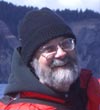 Robert Collier Robert Collier
Associate Professor, Oregon State University
Bob Collier is the Chief Scientist for the cruise (meaning he has to do all the paperwork) and is in charge of the Sediment Trap mooring experiment. He will also conduct the water sampling with the "CTD" to study the physical and chemical characteristics of the seep and basin water. Bob received his Ph.D. in Chemical Oceanography from the MIT-WHOI Joint Program in 1981 and is currently an Associate Professor at Oregon State University's College of Oceanic and Atmospheric Sciences. Bob’s research focuses on the trace metal geochemistry of dissolved and particulate materials in the marine environment, including processes at ridgecrest hydrothermal systems. While a graduate student, he joined scientists from OSU in the first discovery of seafloor hydrothermal systems, in 1977, near the Galapagos Islands. In 1988- 1989, Bob explored the bottom of Crater Lake, Oregon with the submarine DEEP ROVER.
When not working, Bob enjoys being with his family on camping and fishing trips to the coast and to the Cascade Mountains. Sometimes he works on stained glass projects, and he collects old art and memorabilia from Crater Lake, Oregon.
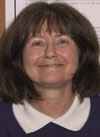 Linda Hobson, Instructor Linda Hobson, Instructor
Linn-Benton Community College, Lebanon, Oregon
Linda Hobson teaches adult basic skills/GED preparation for Linn Benton Community College in Lebanon, OR. She has lived in the Willamette valley for 6 1/2 years. She grew up in the desert and raised her children in the mountains of Arizona. While in Arizona, Linda taught fifth and sixth grade on the Navajo Indian Reservation and adult basic skills/GED preparation and ESOL at a Native American-run health and human services agency. When not teaching, Linda enjoys kayaking, hiking, gardening, reading, and learning new things. Linda is always up for an adventure, such as going to sea on a research vessel.
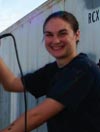 Erica McQuay, Graduate Student Erica McQuay, Graduate Student
Oregon State University
Erica McQuay began her education with an undergraduate degree in chemistry. She didn’t see much future in her job as a lab technician. So, she began looking for something that would use her chemistry background but with a natural sciences focus. She was always really interested in the ocean, so chemical oceanography seemed like the perfect fit. Erica is currently researching barite, or barium sulfate, and marine sediments. She is working on a chemical method to separate the barite from other marine sediments. When not working or studying, Erica loves to cook, eat, read and knit.
 Chris Moser, Senior Faculty Research Assistant Chris Moser, Senior Faculty Research Assistant
Oregon State University
Chris Moser is originally from Wheeling, West Virginia. He graduated from Dickinson College in Geology in 1971. He received a Master of Science in Marine Geology from Oregon State University in 1979. Chris designs, builds, deploys (puts in the ocean), and recovers (retrieves) oceanographic instruments. During this cruise, Chris will be responsible for recovering the sediment trap mooring. He will also be in charge of deploying the Multicorer. When not doing oceanography, Chris can be found raising two sons and remodeling his home. He also enjoys hiking, biking, and traveling
when he gets the chance.
 Sonya Newell, technician Sonya Newell, technician
Oregon State University
Sonya Newell is an oceanographic research technician. Her job primarily involves preparing, maintaining, and deploying the various types of equipment used to collect samples and/or data from the ocean. She also processes some of the samples the scientific team collects. She records the data for analysis. Sonya majored in geology at Oregon State University. She has been working as a research technican for several different organizations since that time, including the College of Oceanic & Atmospheric Sciences at OSU, the National Park Service, and the Partnership for Interdisciplinary Studies of the Coastal Oceans (PISCO.) Sonya likes to spend her free time SCUBA diving, teaching SCUBA, hiking, reading science fiction, and riding her motorcycle.
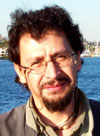 Marco Rubio, Graduate Student Marco Rubio, Graduate Student
Instituto de Geofisica, Universidad Nacional Autonoma de Mexico
Marco studies engineering geology as a graduate student in Mexico. His interests include ore deposits and submarine hydrothermal systems. When not working, Marco enjoys reading Latino American Literature. He is also interested in Mayan culture, and he enjoys photography.
 Marta Torres, Associate Professor Marta Torres, Associate Professor
Oregon State University
Marta is an associate professor of chemical oceanography at Oregon State University. She is interested in using chemical analyses to study processes that occur within the ocean sediments. When particles get deposited at the seafloor they carry with them some of ocean water, which scientists call “pore water” because it fills the pores between the sediment grains. During burial into the sediment, some of these particles experience changes. These are easily “read” by studying changes in the porewater chemistry. This information is useful to understand the biological and chemical history of the ocean and its response to climate change.
In some areas, the pore water is forced out of the sediments by geologic processes, in what oceanographers call “cold seeps”. Marta has been particularly interested in the chemistry of cold seeps. She has studied these cold seeps along the entire Pacific Rim. In the western Pacific she worked in the Sea of Okhotsk, Sea of Japan and around the Philippine islands. In the eastern Pacific, she has been involved in research from the Oregon margin to the tip of southern Chile and Antarctica.
When not working, Marta spends most of her time traveling with her son’s soccer team and attending his orchestra performances. She enjoys reading and music.
 Marian Tyson, Instructor Marian Tyson, Instructor
Clatsop Community College, Astoria, Oregon
Marian Tyson teaches Adult Basic Education, GED, ELL, and College Preparatory courses at Clatsop Community College in Astoria, Oregon. She has also taught in a teacher exchange program in Ecuador, received a TESOL grant to Venezuela, and participated in a Rotary exchange to Brazil. This past summer she took a teacher's course at the University of Salamanca in Spain. Marian enjoys traveling, learning languages, and doing yoga.
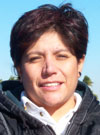 Ruth Villanueva-Estrada, Graduate student Ruth Villanueva-Estrada, Graduate student
Instituto de Ciencias del Mar y Limnologia, UNAM
My name is Ruth Esther Villanueva Estrada. I am 32 years old. I studied chemistry in UNAM (Mexico City University). My masters science is in chemical oceanography. Now I'm doing my Ph.D. studies on the geochemistry of hydrothermal vents in the coast off southern Baja California. I am also professor of analytical chemistry in UNAM. I have a four year old child and I enjoy a lot the time that I spend with him. My husband is also a scientist who works on biological oceanography. I have been in scientific cruises in Mexico, and now I'm happy to participate in this cruise with Bob Collier and Marta Torres, as a Mexican collaborator.
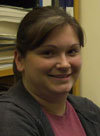 Daniela Zima, Graduate student Daniela Zima, Graduate student
Oregon State University
Daniela is a first year graduate student working on her Master’s degree in chemical oceanography. She received a Bachelor of Science degree in chemistry and marine biology from Stockton College in New Jersey. She has lived in New Jersey her entire life. The opportunity to participate in innovative oceanographic work, and a change of scenery, made moving to the opposite side of the country a challenging, but rewarding experience. Daniela’s research aims to reconstruct the history of ocean circulation patterns in the Arctic. She bases her work on the cadmium and barium content in bivalve shells. Daniela compares this content to the barium and cadmium in the sources of water to the Arctic region.
In her spare time, Daniela enjoys biking, going to the gym, horse-back riding, or basically doing anything outside. She also likes to spend time with friends and family, whether it be lounging in front of the TV, watching a movie, or shopping. Daniela also likes to kick back with a good book or magazine and relax.

|





 Robert Collier
Robert Collier Linda Hobson, Instructor
Linda Hobson, Instructor Erica McQuay, Graduate Student
Erica McQuay, Graduate Student Chris Moser, Senior Faculty Research Assistant
Chris Moser, Senior Faculty Research Assistant Sonya Newell, technician
Sonya Newell, technician Marco Rubio, Graduate Student
Marco Rubio, Graduate Student Marta Torres, Associate Professor
Marta Torres, Associate Professor Marian Tyson, Instructor
Marian Tyson, Instructor Ruth Villanueva-Estrada, Graduate student
Ruth Villanueva-Estrada, Graduate student Daniela Zima, Graduate student
Daniela Zima, Graduate student